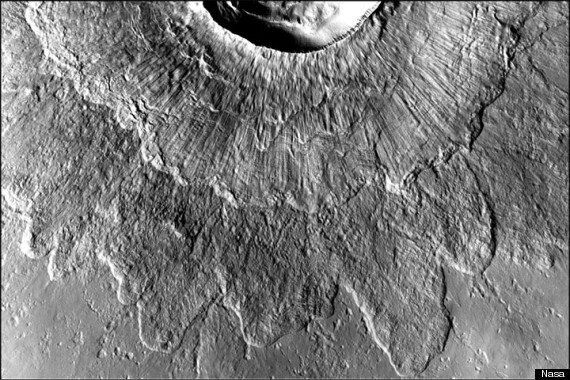A Martian mystery that has confounded experts for more than four decades may have been solved.
Data from the Viking missions to Mars in the 1970s famously returned pictures of strange 'layered' craters on the Red Planet's surface.
The pictures appears to show double-layered impact craters, where a smaller inner layer sits on top. Ever since astronomers and geologist have been attempting to puzzle out how they form, without success.
But now a team from Brown University in the US say they've got a solution.

The team says that at the time of the meteor impact the Martian surface was covered in a thick sheet of glacial ice. Immediately after an impact rock and other material was blasted out on the surrounding ice. But instead of staying where it fell, the material at the top of the crater rim later slides down the surface and over the first layer. Those landslides create the strange formation of rocks, now that the ice has melted.
Brown graduate student David Kutai Weiss and James W. Head, professor of geological science say that their model is the first to solve the mystery - but that their theory relies of years of work by other teams.
"Recent discoveries by planetary geoscientists at Brown and elsewhere have shown that the climate of Mars has varied in the past," Head said.
"During these times, ice from the polar caps is redistributed into the mid-latitudes of Mars as a layer about 50 meters thick, in the same place that we see that the DLEs have formed. This made us think that this ice layer could be part of the explanation for the formation of the unusual DLE second layer."
The paper will be published in the journal Geophysical Research Letters.